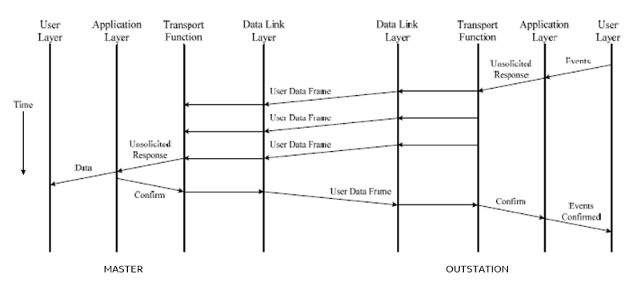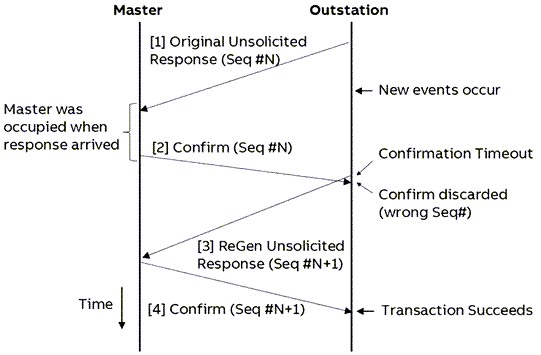Unsolicited messages are an event driven feature in DNP3, which allows outstation to proactively report changes or events (e.g., a threshold is crossed, or a state change is detected) to the master as they occur, rather than waiting for the master to poll for data.
During restart, once after master sends enable unsolicited messages, then outstation sends spontaneously the events with class to master. User must ensure that unsolicited messages are enabled / disabled in both master and outstation. Enable the unsolicited messages with the relevant class related events in the session user interface in the example project.
Outstation packs the relevant event data into an unsolicited response message in a user data frame.
This includes necessary headers, function codes, and data objects as defined by the DNP3 protocol to the master. This transmission can happen over a transport layer.
Upon receiving the unsolicited messages, the master station is expected to send a confirmation back to the outstation. If the confirmation is received within a specified max delay timeout, the outstation considers the unsolicited response successfully communicated.
If the acknowledgment is not received within the max delay timeout period, the outstation may retry sending the (same events) unsolicited message, according to a predefined number of maximum retries.
Unsolicited messages must be enabled in master as well to receive the messages sent from outstation.

There could be another scenario, where the confirmation from master was timed out and outstation has initiated another unsolicited response. When master is occupied and missed to send confirmation response, outstation has the option to send an identical retry of the original response or regenerate retry unsolicited response. The retry unsolicited response includes the new events and increments the sequence number. Even though outstation sends the events through retry unsolicited response, master would have certainly received duplicate events. But master confirms only for the new unsolicited message with reference to the below figure, unsolicited responses [3] received by master and confirmed.






